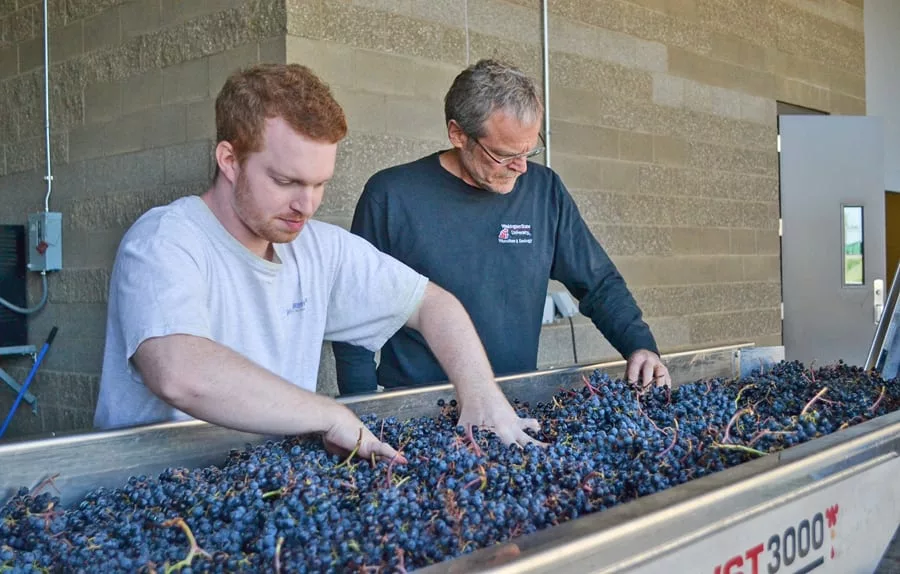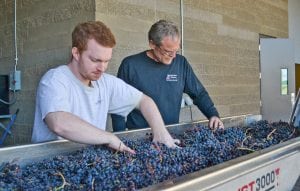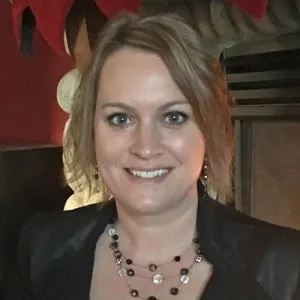
Home » Wine Science Center a boon to state viticulture, enology industry
Wine Science Center a boon to state viticulture, enology industry

February 14, 2017
The region’s wine leaders realized several years ago that an investment in students and research would ultimately lead to a more lucrative statewide industry.
The students have come and the research is underway with the opening of the Washington State University Ste. Michelle Wine Estates Wine Science Center in Richland.
“Industry leaders said, ‘We have more than 900 wineries in the state, we need qualified people to work in our vineyards and wineries, and we need research,’ ” said Kaury Balcom, WSU public relations and communications coordinator for the viticulture and enology program.
The center opened in 2015, thanks to more than $23 million in industry funding, Balcom said. Every worldwide wine area has a university for research, so it was a necessary and natural step, with Washington being the second largest premium wine producer and largest grape producer in the nation, she said.
The 40,000-square-foot wine center in north Richland provides viticulture and enology professionals with a teaching winery, research laboratories, classrooms and meeting spaces.
Fertile grounds for research
But it’s the facility’s research that matters most, officials say.
“Viticulture and enology research excellence is a strategic imperative for the continued successful growth of the Washington state wine industry. The … Wine Science Center and the researchers at WSU are playing a starring role in our industry life story,” said Steve Warner, Washington State Wine Commission president.

Nearly 25 percent of the center’s annual budget, or more than $1.3 million, supports viticulture and enology research, including a 10-year $7.4 million commitment to the construction of the Wine Science Center – paid through grower and winery assessments.
“We’ve completed two harvests here in the Wine Science Center – two entire productions of research wines,” Balcom said. “It’s the first time ever on-site, which is exciting.”
Research varies, with 13 projects in progress, ranging from “Smoke Taint of Grapes and Wine” to “Spray Application Technologies” and “Grapevine Leafroll and Red Blotch Diseases in Washington.”
The smoke taint project has gained international attention, Balcom said.
“We’re measuring the effect of wildfires (and smoke) on the vines, the fruit and in the wine. They built a hoophouse shelter for vines and hooked a Traeger smoker up to simulate smoke damage from wildfires,” Balcom said. “We’ve seen wildfires increase like crazy over the past few years, not just in Washington state, but also in California and Australia’s wine grape growing regions. The research results could potentially help the industry worldwide.”
Last year’s crown gall research project studied the disease’s effects on vines, Balcom said. “The research will continue, as funding continues to come in,” she said.
The viticulture and enology program received $278,000 earlier this month from Auction of Washington Wines, the fundraising arm of Washington State Wine. “The funds will strictly be used for research,” Balcom said.
About 100 people are expected to participate in an upcoming symposium, “Climate Extremes: Is the Pacific Northwest Wine Industry Ready?,” on March 17 at the WSU East Auditorium, Richland. Researchers and industry leaders will discuss climate trends, effects of extreme weather, solutions for mitigating damage and resources. (See story on page 50.)
“Many of the research trials are in the preliminary stages, but all have a goal of helping all our winemakers and growers, from our smallest to our largest, makes the best wines in the world.
“Past research outcomes have been game-changers for the industry by helping growers conserve up to 50 percent in water savings, reduce chemical inputs, reduce wine spoilage and know when vines need cold protection, to name a few,” Warner said.
Research funding sources include public, private and industry groups. Research takes place at the Wine Science Center, WSU Pullman and the Irrigated Agriculture, Research and Extension Center in Prosser.
Program sees growth
The college’s viticulture and enology program has seen student enrollment growth and currently has 114 students registered.
“We saw the largest (viticulture and enology) graduating class last spring and this year’s class is even larger,” Balcom said.
Seven full-time and 23 part-time faculty oversee the program.
Undergraduate viticulture and enology majors are part of the Integrated Plant Sciences Bachelor of Science Degree program, and undergrads have the option of seeking a viticulture and enology minor in combination with horticulture or wine business management, the first of its kind in the Northwest.
The undergrad curriculum covers topics from grapevine physiology to vineyard and winery equipment systems and chemistry/biochemistry of fruit and wine.
Graduate students can choose a master’s of science or doctorate degrees focused on viticulture, enology or grapevine diseases, and pests, soils, climate and engineering research.
“Our enrollment has grown so much that we’re trying to finish building lab space. We need to finish spaces for more students to work,” Balcom said. “It’s already in the footprint, but the rooms are down to the studs right now. We are in the process of looking for funding and are actively looking for donations.”
The Washington Advancements in Viticulture and Enology, or WAVE, event last year allowed researchers to report back to industry representatives about their project results.
“We want to tell them (industry leaders) what we’re doing, so WAVE was a great way to do that,” Balcom said. This year, three separate WAVE events will be hosted – one in Walla Walla, one in Woodinville and the other in the Columbia Valley.
The Wine Science Center helps to carry out research from vineyard to winery, berry to bottle, as the industry strives to improve wine quality, Warner said.
“Research conducted at the Wine Science Center is industry-driven, with research priorities set by the wine industry, as a result of a strong partnership between the wine industry and WSU,” he said. “Researchers will help us identify locations for new vineyards, improve vineyard and winery management practices, manage grapevine viruses, and so much more.”
Last year’s first research conference drew a sold-out crowd, validating the importance of world class research to the state’s wine industry, Warner said. “We’re lucky to have a state-of-the-art program right here in Washington and are committed to supporting research now and in the future, as we believe it will accelerate our growth and differentiate us on the global stage,” he said.
The Wine Science Center already has paid large dividends for the industry, Balcom said.
“We’re seeing student numbers rise, more research dollars than ever before, and are very well-supported. We’re in a great place and looking forward to what is to come,” she said.
Local News Viticulture
KEYWORDS february 2017





